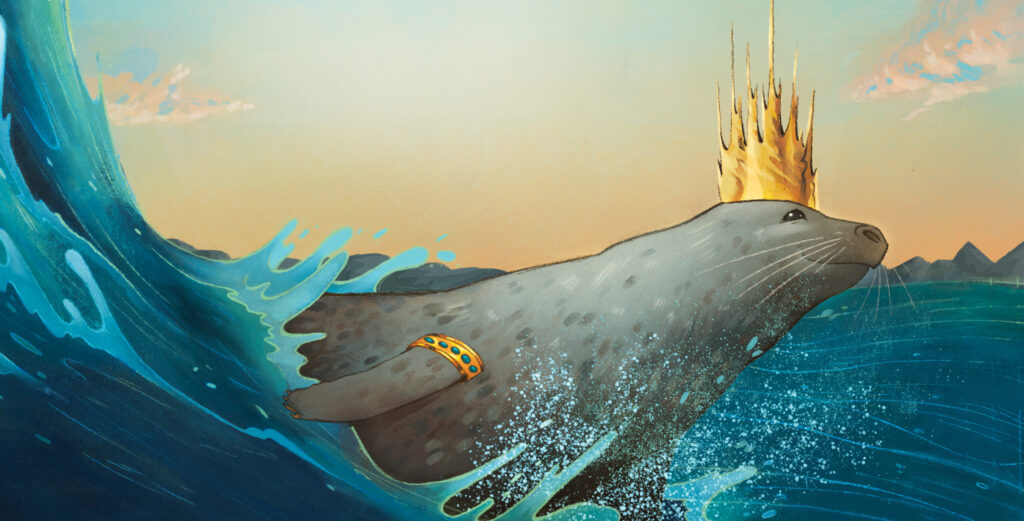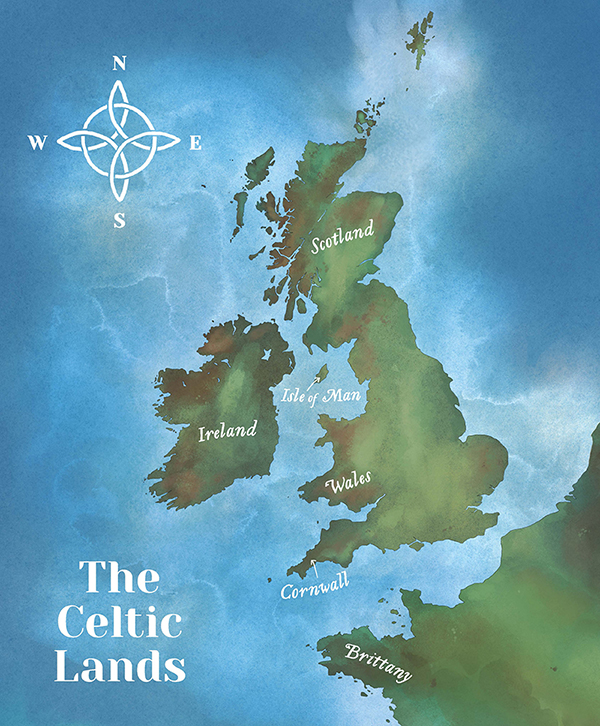Celtic Tales – what does that mean?
by Floris Books • 9 October 2025 • Children's Books • 0 Comments
Guest Post by Lari Don
I love traditional tales about magic, shapeshifters, fairies and monsters (and clever ways to defeat monsters), and I love researching, retelling and sharing those stories.
The stories I know best are Scottish stories. Over time, as a storyteller and as an author who plays with old tales to inspire my new stories, I’ve discovered connections between the Scottish tales I work with most, and very close cousins of those stories. Stories from Ireland, Wales, the Isle of Man, Cornwall and Brittany; stories from lands on the northwestern coastal edge of Europe.
It’s even more exciting to share waterhorse tales, changeling stories and shapeshifter lore, when you can see story threads weaving across sea and land, islands and mountains… (I talk a bit about this in my telling of the waterhorse story – check it out here!)
That excitement is why I’ve researched and written a collection of Celtic tales!
But… wait. Why do we call them Celtic tales? What does ‘Celtic’ mean?
Think for a moment. What does Celtic mean to you?
- Fancy swirly brooches with animal heads?
- A football team (pronounced with a S not a K)?
- Warriors fighting the Romans?
- A way of identifying your ancestry?
- Languages with a similar root?
- What else?
‘Celtic’ means many different things to people nowadays, and has meant different things in previous centuries and millennia too.

Here’s my understanding of the tangled and hotly debated history of the word ‘Celtic’:
The first people to use the word ‘Celt’ (or Keltoi) were ancient Greeks and Romans, to describe tribes in what are now Germany and France. However, there is little or no evidence those tribespeople called themselves Celts.
More than a thousand years later, there was a theory (since mostly debunked) that the folk described as Celts had been forced to the northwestern coastal edges of Europe. So people studying languages in the 18th century revived the word ‘Celtic’ to describe the linked languages spoken on and near that coast: Irish and Scots Gaelic, Welsh, Manx, Cornish, Breton. However, there is little or no evidence these were the languages spoken by the people called Celts in ancient times.
Despite that lack of real evidence, having the word ‘Celtic’ (connected with fancy jewellery and with warriors who took on Roman legions) describing your language was quite cool. So people speaking those languages embraced the description, and now the word ‘Celtic’ is used for much more than languages. It’s used for cultures. For a sense of belonging, especially if your family has moved elsewhere. And for stories…
Therefore, when we say ‘Celtic tales’ in this collection, we mean stories that have been told for many generations, in the lands where languages described as Celtic are now or have recently been spoken.
And what stories they are! Waterhorses (from the Isle of Man – watch me tell my version in this video), tricky fairies (from Brittany), dragons (from Wales), giants (from Ireland), piskies (from Cornwall), changelings (from Scotland) and shapeshifters from as many places as possible. All with dramatic and magical illustrations by the wonderful Elise Carmichael.
Whatever Celtic means to you, I hope you enjoy our Celtic Folk and Fairy Tales!


